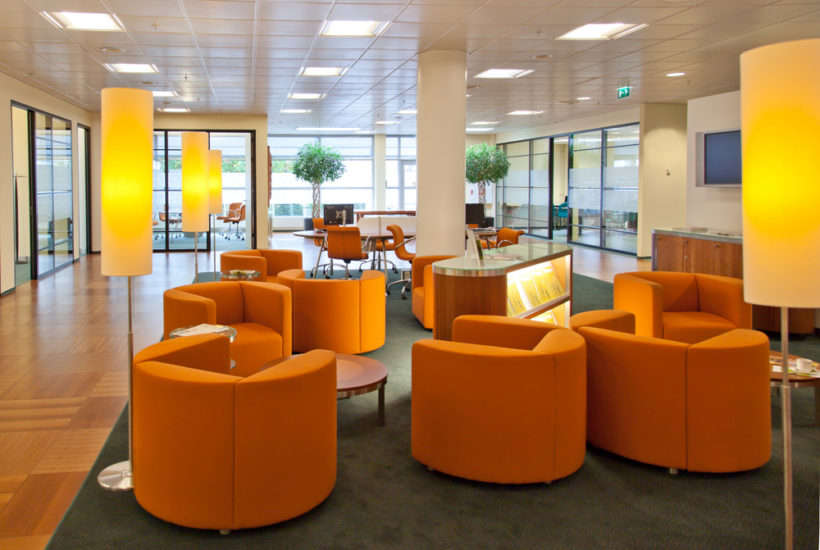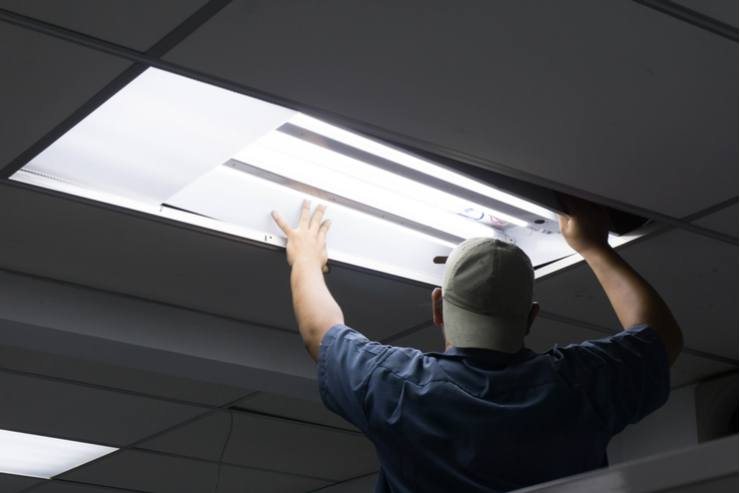Business
4 office lighting tricks that can improve worker happiness
Offices all around the world are infamous for their flickering, dim, and let’s face it — depressing fluorescent lighting.

The fluorescent lights have actually been proven to have negative effects on workers’ mental and physical health and even their productivity. A study conducted by the American Society of Interior Designers showed that a staggering 68 percent of employees complained about their office lighting.
If you want to create an office environment that improves the overall happiness and productivity of your employees, there are a few lighting tricks that are easy to implement and will positively affect your bottom line. Read four quick tips you can use to brighten up your office and increase worker happiness:
1. Switch to an LED or CFL lighting system
If your office is still using an out-of-date fluorescent lighting system, the first and most important change you need to make is to switch to a modern, brighter LED or CFL lighting system. Both LED and CFL lighting systems are much more energy-efficient, cost-efficient and easier on the eyes than old fluorescent systems.
LED lights are made up of miniature bulbs powered by the movement of electrons. This modern technology replaces the filament inside a regular incandescent bulb and is also proven to positively impact a person’s health and make workers more productive in the process.
CFL lights are a more powerful, light-bulb version of fluorescent lighting. CFL bulbs screw into standard light sockets, come in a wide range of shapes and sizes, and give off a similar lighting effect to regular incandescent bulbs. Whether you choose to go with a CFL or LED lighting system, your office workers are sure to thank you after you make the switch.
2. Implement modern ceiling grids
Traditional office ceiling grids tend to have a bland, 1990s office look and feel with their plain white perforated soundboards. However, modern ceiling grids are more aesthetically pleasing and easier to install. They’re broken into segments with spaces that expose the ceiling, while still including sound masking and electronic equipment to provide a more modern, open office look.
Within these setups, the lighting is arranged to make a huge aesthetic difference by using the mix of the modern open ceiling to help light bounce around the office more, while still maintaining crucial sound reduction and using noise-canceling speakers to cut down on noise transfer throughout the workplace.
3. Introduce natural lighting, where possible
Introducing natural lighting into the office is one of the best possible ways to make your workers feel happier and healthier. A recent study on the effects of natural lighting on employees reported that over 50 percent of the respondents believed natural light and views of the outdoors to be their most important office perks, leaving behind onsite cafeterias, fitness centers, medical care, and childcare.
Not only do workers want natural lighting — it’s also necessary to improve their health. One study of workplace lighting showed that workers without windows reported lower scores than their counterparts on quality of life measures related to overall sleep quality, sleep efficiency, and daytime dysfunction.
Of course, it’s not always feasible to add natural lighting like skylights or new windows in every building. To combat this, offices can try to adjust the lighting in their offices to look more like sunlight, and add seasonal affective disorder lightboxes throughout the office during long winter days when there are only a few hours of daylight. Using open office furniture concepts instead of old high wall cubicles also allows more natural light to filter into your space.

4. Use employee feedback to adjust the lighting colors
In offices with traditional lighting systems, employees had no choice in the color and brightness of the system. However, modern systems now allow offices to customize the lighting color they want based on their unique preferences.
There are generally three choices of colors when choosing lighting: warm, with more orange tones, cold, with brighter white tones, or a medium between the two. While some employees may strongly prefer warm tones over cold ones and vice versa, many offices can settle on a choice that lies somewhere in the middle, leaving all employees happy with the lighting and ready to be more productive.
By implementing some or all of these lighting tricks into your office, you can ensure you’re taking concrete steps to improve the happiness and health of your employees and improve the overall work environment.
(Featured image by ariadna de raadt via Shutterstock)
—
DISCLAIMER: This article expresses my own ideas and opinions. Any information I have shared are from sources that I believe to be reliable and accurate. I did not receive any financial compensation for writing this post, nor do I own any shares in any company I’ve mentioned. I encourage any reader to do their own diligent research first before making any investment decisions.

-

 Cannabis1 week ago
Cannabis1 week agoMedical Cannabis vs Street Weed: Why Therapy Makes More Sense in 2025
-

 Markets2 days ago
Markets2 days agoGold, Liquidity, and Market Complacency Heading Into 2026
-

 Cannabis8 hours ago
Cannabis8 hours agoAgential Cannabis 2026 Set to Spotlight Southeast Asia
-

 Impact Investing1 week ago
Impact Investing1 week agoCOP30: Fragmented Climate Politics, Multi-Speed Transition, and Emerging Investment Opportunities
























